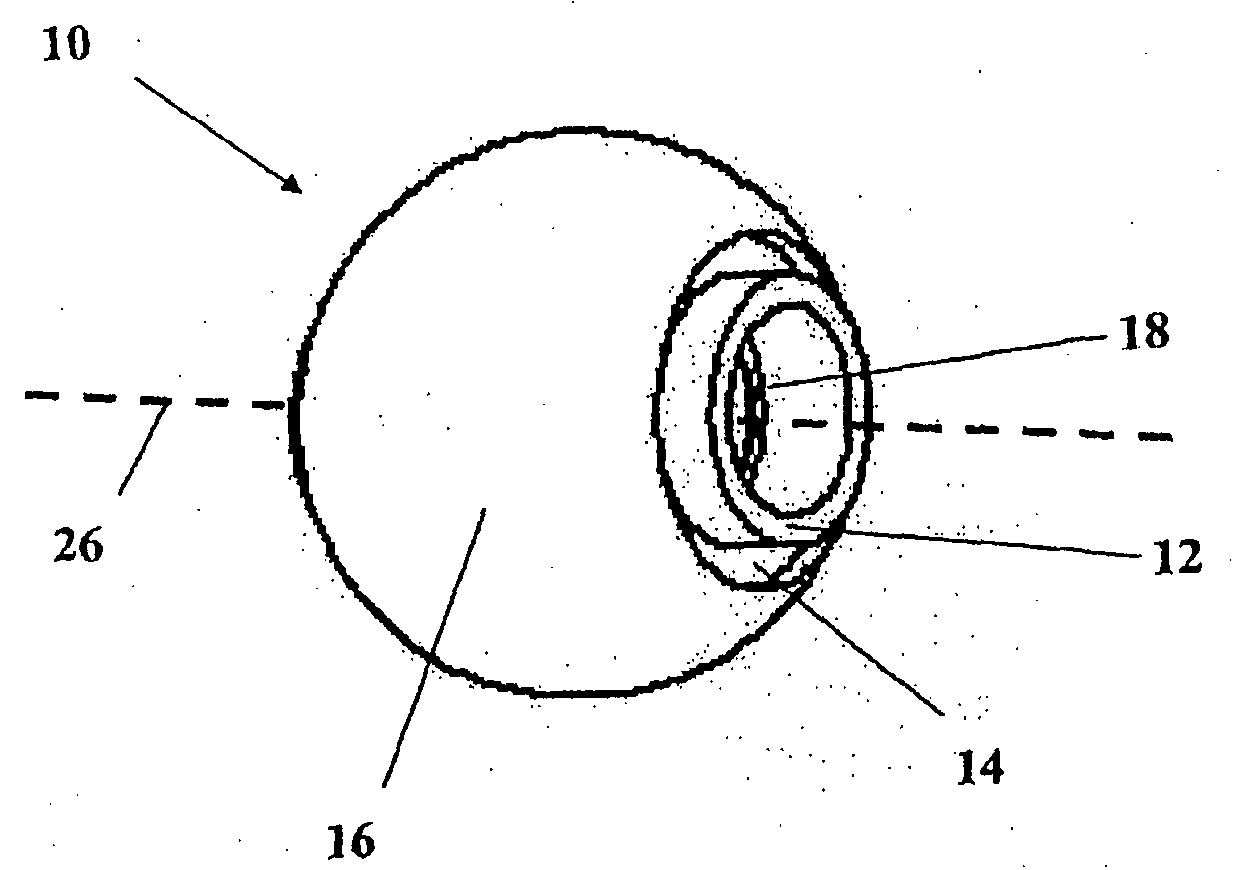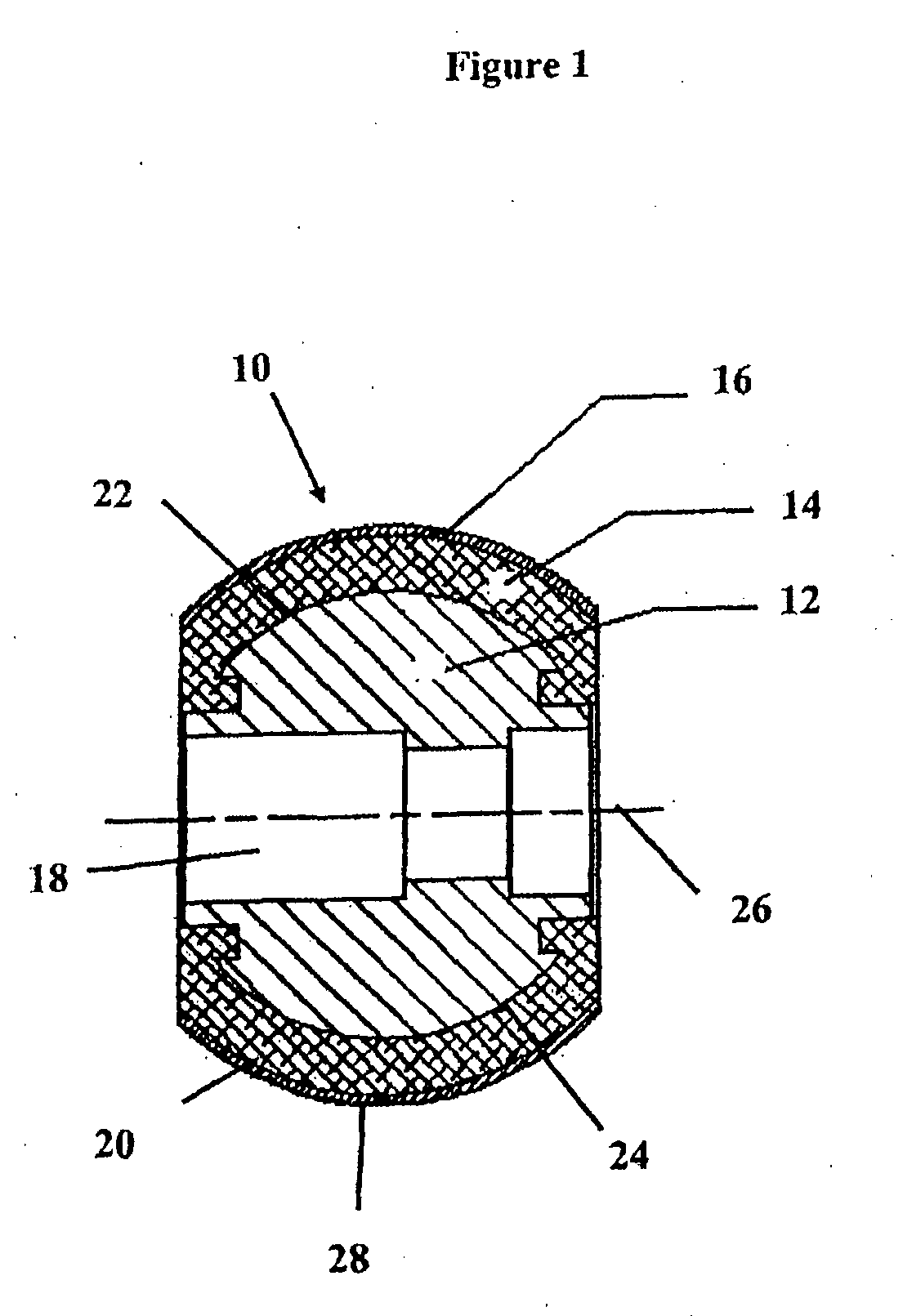Polishing wheel
a polishing wheel and wheel body technology, applied in the field of polishing wheels, can solve the problems of discontinuous surface, rough surface on the surface of the lens, and the polishing method has the disadvantage of requiring a separate lap for each lens prescription,
- Summary
- Abstract
- Description
- Claims
- Application Information
AI Technical Summary
Benefits of technology
Problems solved by technology
Method used
Image
Examples
example 2
[0075]The process for measuring the material removal rate of the polishing process requires generating a cut surface with a large chamfer on the outside edge. This chamfer will not be touched during the polishing process and it provides a fixed reference for measurement.
[0076]The lens is blocked and the surface is cut. The surface of the blocked lens is then measured on a profilometer. A profilometer is typically used to measure surface roughness but in this case it can be used to measure the difference between the cut surface before and after polishing. The lens surface is then polished with a polishing wheel according to the present invention for 400 seconds and measured on the profilometer again. The polished area has had some material removed from it and is lower relative to the chamfered area which is not touched during the polishing process. The measurement traces taken before and after polishing are aligned and the differences between them are the resultant rate of material r...
PUM
| Property | Measurement | Unit |
|---|---|---|
| Thickness | aaaaa | aaaaa |
| Area | aaaaa | aaaaa |
| Hardness | aaaaa | aaaaa |
Abstract
Description
Claims
Application Information
 Login to View More
Login to View More - R&D
- Intellectual Property
- Life Sciences
- Materials
- Tech Scout
- Unparalleled Data Quality
- Higher Quality Content
- 60% Fewer Hallucinations
Browse by: Latest US Patents, China's latest patents, Technical Efficacy Thesaurus, Application Domain, Technology Topic, Popular Technical Reports.
© 2025 PatSnap. All rights reserved.Legal|Privacy policy|Modern Slavery Act Transparency Statement|Sitemap|About US| Contact US: help@patsnap.com



